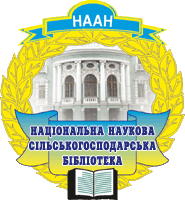|
The development of grain farming, in which the priority is to produce winter wheat, plays a major role in addressing the food security issue of Ukraine and other countries. Wheat has always been and remains the main foodstuff of man. As the history of human development shows, wheat grain is not only a measure of the welfare of the people and the independence of the state, but also of strategic raw materials. Winter wheat has long been the main food crop that holds about 40% of the crop area. Significant loss of winter wheat yields is caused by parasitic diseases of various etiologies, in particular, heartburn diseases. In some years, during epiphytotic, the lack of grain yield due to damage by harmful organisms can reach 10–15% of gross tax. In addition, the affected crops produce corn with lower commodity and seed qualities. More pathogens of dangerous diseases of winter wheat are transmitted by seeds. Seed infection worsens crop properties and inhibits the development of plants. Ill seed is a place of storage of infection, a source of renewal for the next year and resettlement in new areas. In the article the method of historical-scientific analysis considers one of the periods of development of knowledge on the appearance and harmfulness of fungal disease of a solid (wet, zone) wheat grasshopper in the late 19 – early 20 century. The contribution of prominent scientists to the study of biology of the pathogen development has been researched. The scientific team of the Ukrainian Research Institute of Plant Protection performed a number of important works. In particular, in the field of phytopathology, the ways of selection of wheat samples are outlined, a method of resistance against head is developed; the signs of a patient on a grain of wheat grain are defined for its use at the control of the seed material.
The stinking smut excited people even in ancient times, was known to the Greeks and Romans, served as the subject of research for many ancient and modern scholars. However, the definitive presentation of knowledge of the disease was established only in 1866 by studies by the English scientist De-Bari, who found that fungal diseases are essentially specific fungi that develop and affect only their own species of host plants. The stages of development of the phases of the disease development, the influence of the environmental conditions on their passage and the severity of the solid carbon black are shown.
|
|
- Bryantsev, B. A. and Dobrozrakova, T. Ya. (1960). Zaschita rasteniy ot vrediteley i bolezney [Plant protection from pests and diseases]. Moskva ; Leningrad, Selhozgiz, 480. [in Russian].
- Vаrlih, V. K. (1897). Bolezni nashih kultur rasteniy, prichinyaemyie parazitnyimi gribami. [Diseases of our plant cultures caused by parasitic fungi]. Sankt-Peterburg : izd. A. F. Devriena. 1 : Bolezni hlebnyih zlakov [Diseases of cereals]. 36. [in Russian].
- Galkov, V. (1926). Golovnya zernovyih hlebov i sredstva borbyi s ney. [Smut cereals and means of dealing with it]. Sverdlovsk : izd. Uraloblzu, 38. [in Russian].
- Hijytska, Z. (1931). Sazhka ta zona na zernivkakh [Smut that zone on the grain]. Kharkiv ; Kyiv : Derzhsilhospvydav, 30. [in Ukrainian].
- Ivanov, K. (1900). Golovnya [Smut]. Polnaya entsiklopedіya russkago selskago hozyaystva i soprikasayuschihsya sy nimy nauky [The complete encyclopaedia of the Russian agriculture and the adjoining sciences]. Sankt-Peterburg : izd. A. F. Devrіena. 2. 701–709. [in Russian].
- Kalashnikov, K. Ya. (1959). Zaschita zernovyih kultur ot golovni [Protection of crops from smut]. Moskva ; Leningrad : Selhozgiz, 118. [in Russian].
- Lytvynenko, P. (1930). Holovnia, abo zona ta sazhka na khlibakh i borotba z neiu [Smut, or a zone and a butcher in breads and struggle with it]. Kherson : Chervoni selianyn, 12. [in Russian].
- Marshal, U. ; Volkenshteyn, P. E. (transl.) (1891). Bolezni rasteniy (dlya zemledeltsev i sadovodov) [Diseases of plants (for farmers and gardeners)]. Sankt-Peterburg : tip. A. S. Suvorina, 34. [in Russian].
- Mariutin, F. M., Pantielieiev, V. K. and Bilyk, M. O. (2008). Fitopatolohiia. navchalnyi posibnyk [Phytopathology : Primary Community]. Kharkiv : Espada, 550. [in Ukrainian].
- Nyzhnyk, S. V. (2016). Narys zhyttia ta tvorchoi diialnosti akademika UAAN V. F. Peresypkina (1914–2004) : monohrafiia. [Essay on life and creative activity of academician of UAAS V.F. Peresipkina (1914–2004)]. Uman : Sochinskyi, M. M., 176. [in Ukrainian].
- Nozdrachev, K. and Chevelyi, M. (1932). Zakhody borotby proty holovni na khlibakh [Measures of struggle against the main on bread]. Kharkiv : Derzhsilhospvydav, 23. [in Ukrainian].
- Shelepov, V. V. et al.(2009). Pshenitsa : istoriya, morfologiya, biologiya, selektsiya [Wheat : history, morphology, biology, selection]. Kiev. 580. [in Russian].
- Sigrianskiy, A. M.(1931). Golovnya selskohozyaystvennyih rasteniy. [Smut crops]. Moskow : SKHGIZ, 128. [in Russian]
- Sigrianskiy, A.M. (1925). Chto takoe golovnya i kak s ney borotsya? [What is the main thing and how to deal with it?]. Moskow. 20. [in Russian].
- Sigrianskiy, A. M. (1930). Golovnya selskohozyaystvennyih rasteniy. 2-e izd., peresmotr., ispr [Smut crops. 2nd edition, revised, revised]. Moskow ; Leningrad : Gosizdat, 112. [in Russian].
- Strakhov, T. D. (1923). K voprosu o vliyanii polevodstvennykh faktorov na porazhayemost khlebnykh zlakov golovney [On the question of the influence of crop factors on the susceptibility of cereals in the smut]. Selskokhozyaystvennoye opytnoye delo [Agricultural Pilot Case]. 2. 4. [in Russian].
- Strakhov, T. D. (1962). Vvedeniye v obshchuyu fitopatologiyu [Introduction to general phytopathology]. Kiev. 172. [in Russian].
- Shembel, S. Yu.( 1915). Golovnya hlebnyih zlakov i meryi borbyi s ney. [Smut of cereals and measures to combat it]. Astrahan : tip. A. Shtyilko, 42. [in Russian].
- Shchebetiuk, N. B. ; Verhunov, V. A. (ed.). (2017). Rozvytok ahrarnoi nauky Ukrainy naprykintsi 20-kh – 30-i rr. XX st. : monohrafiia / NAAN, NNSHB, In-t istorii ahrar. nauky, osvity ta tekhniky [The development of agrarian science of Ukraine in the late 20 – in the 1930]. Kamianets-Podilskyi : TOV Drukarnia «Ruta», 380. [in Ukrainian].
- (1852). Under Franz Versuch liner Geschichte der Pflanzenweit [Under Franz try liner History of Plantwide]. Vein, 364. [in German].
|


